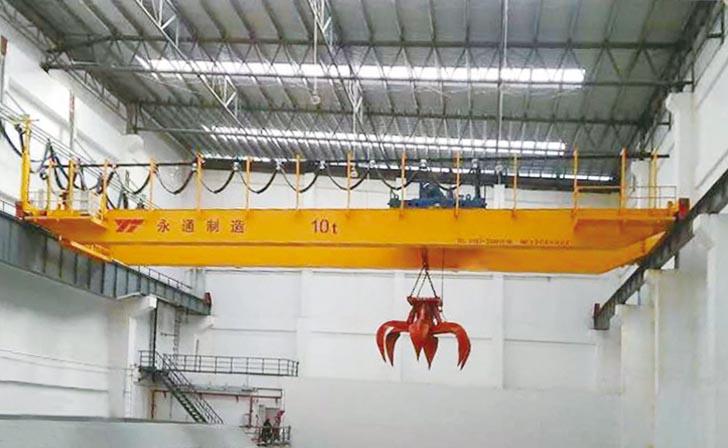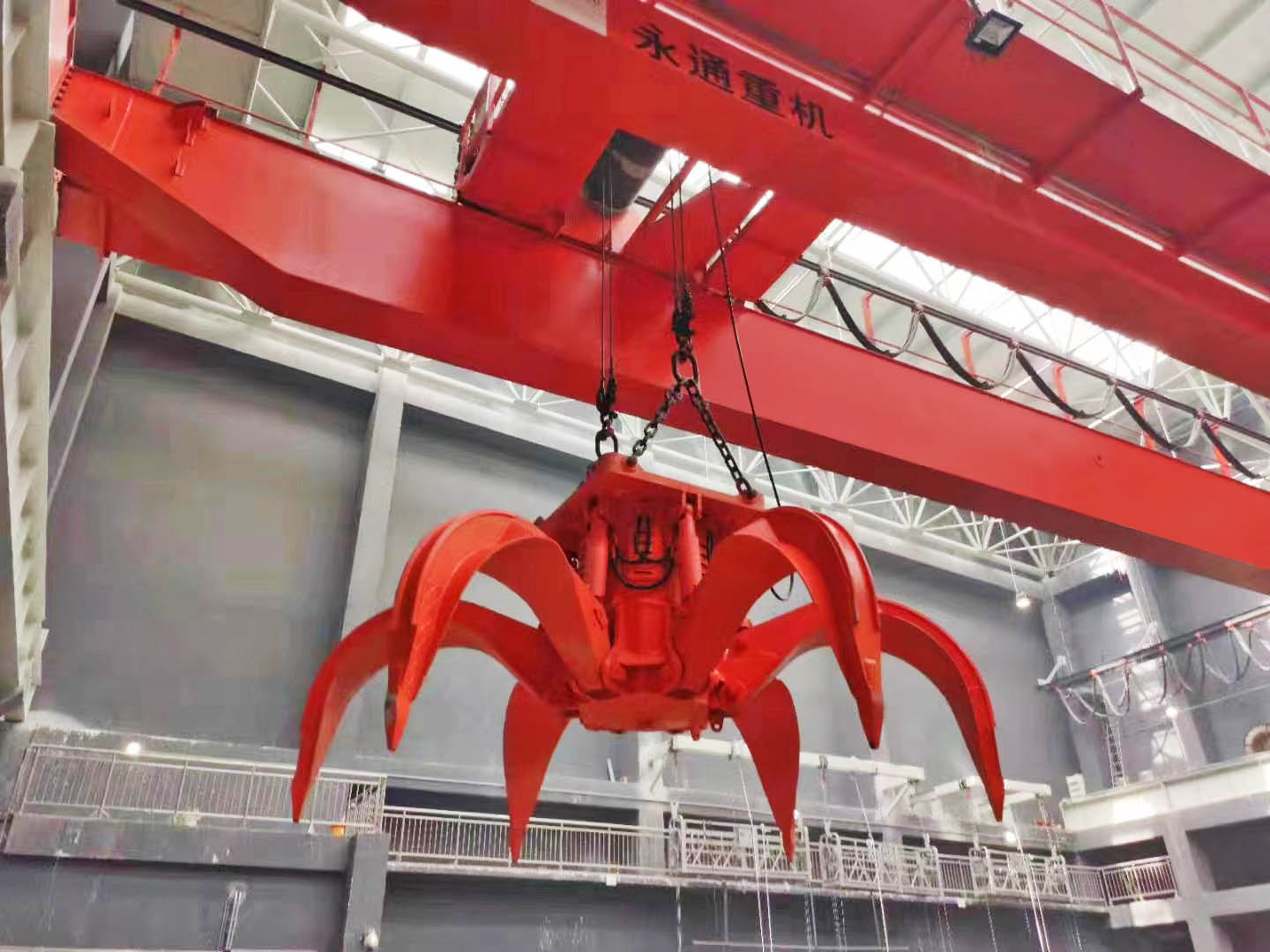

2023-03-16
Garbage crane is a kind of crane equipment used in garbage incineration power plant, it can use the grab to take materials, handling, feeding, weighing and other operations. The function of garbage crane in garbage incineration power plant is to grab garbage from garbage pit, transport it to weighing platform for weighing, and then put it into incinerator for incineration. Garbage crane can realize automatic and intelligent operation, improve the efficiency and safety of garbage disposal.
There are two main types of garbage crane: bridge type garbage crane and portal type garbage crane. The bridge type garbage crane is a crane mounted across the garbage pit. Its bridge runs longitudinately along both sides of the track, which can make full use of the space below the bridge to lift materials without being hindered by ground equipment. Gantry garbage crane is a crane composed of two legs and a main beam. Its main beam can have two forms of suspension or no suspension. The trolley is carried out in or beyond the main span. The leg height of gantry refuse crane can be determined according to the requirements of the site. Generally, there are three kinds of gantry, semi-gantry and double cantilever gantry.
The structure of refuse crane is generally composed of lifting trolley, bridge running mechanism and bridge metal structure. The lifting trolley is composed of lifting mechanism, trolley running mechanism and trolley frame. The lifting mechanism includes motor, brake, reducer, reel and pulley block, which can control the lifting and opening and closing of the grab. The trolley running mechanism includes motor, brake, reducer and driving wheel, which can control the horizontal movement of the trolley on the main beam. The trolley frame is a part connecting the lifting mechanism and the trolley running mechanism, which bears the weight of the grab and the material. The running mechanism of the bridge consists of a motor, a brake, a reducer and a driving wheel, which can control the longitudinal movement of the bridge on the track. The metal structure of the bridge is a steel structure composed of the main beam, end beam and leg, which bears the weight of the lifting trolley and materials and is transferred to the track or foundation.
The lifting capacity of garbage crane is generally expressed by the rated lifting weight and working level. Rated lifting weight refers to the maximum weight that can be safely lifted under normal working conditions. Working level refers to the level of load state borne by garbage hanging in a certain working week. The working level of the refuse crane is usually A5 or A6, i.e. medium or heavy working level. The rated lifting weight of garbage crane varies according to different types and structures, generally between 5 and 40 tons.
The application scenarios of garbage crane mainly include garbage incineration power plant, garbage landfill, garbage transfer station, etc. Waste incineration power plant is a kind of facility which uses household waste as fuel and generates steam turbine to generate electricity through the heat generated by incineration. Landfill is a facility that classifies, compacts, and covers domestic wastes and then piles them in a designated site. Garbage transfer station is a facility that compacts, loads, and transports household garbage collected from residential areas and streets. In these scenarios, the garbage crane can realize the fast, accurate and safe handling and feeding of garbage, improving the efficiency and quality of garbage disposal.

The price of garbage crane varies according to different types, structures, lifting capacity and configuration, generally between hundreds of thousands to millions. The performance of garbage crane is mainly reflected in its operation, stability, reliability and durability. Operability refers to whether the garbage crane is easy to operate and control, and whether it can meet different working requirements and environmental conditions. Stability refers to whether the garbage crane can maintain smooth and accurate operation, whether it can resist wind and vibration and other interference. Reliability refers to whether the garbage crane can work normally for a long time and whether it is prone to failure and damage. Durability refers to whether the garbage crane can adapt to the harsh working environment, whether it can extend the service life and reduce the maintenance cost.
The advantages of garbage crane are as follows:
Garbage crane can realize automatic, intelligent handling and feeding of garbage, reduce labor costs and safety risks.
Garbage crane can choose the appropriate grab and parameters according to different garbage types and states to improve the rate and utilization of garbage.
The garbage crane can choose the right type and structure according to different working scenarios and Spaces to improve the garbage handling efficiency and space utilization.
Garbage crane can be according to different working requirements and conditions, choose the appropriate lifting capacity and configuration, improve the garbage feeding efficiency and quality.
In short, garbage crane is a kind of crane equipment suitable for garbage incineration power plant and other scenes, it has a variety of types, structure, lifting capacity and configuration to choose, can realize the automatic, intelligent, efficient, safe handling and feeding of garbage. Garbage crane can not only improve the efficiency and quality of garbage treatment, but also save labor cost and resource consumption. It is an environmental protection, economic and practical equipment.
Copyright @ Guangdong Yongtong Crane Machinery Co., Ltd. 粵ICP備2022051937號(hào)